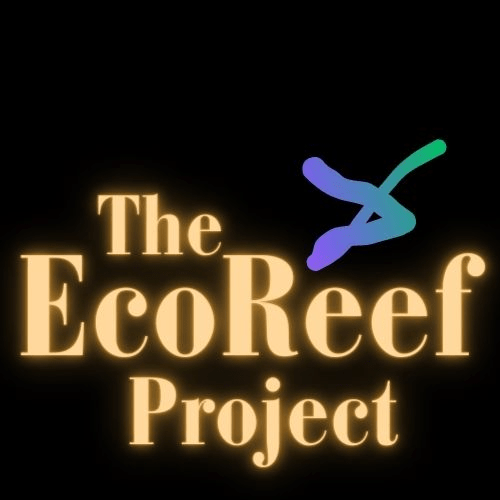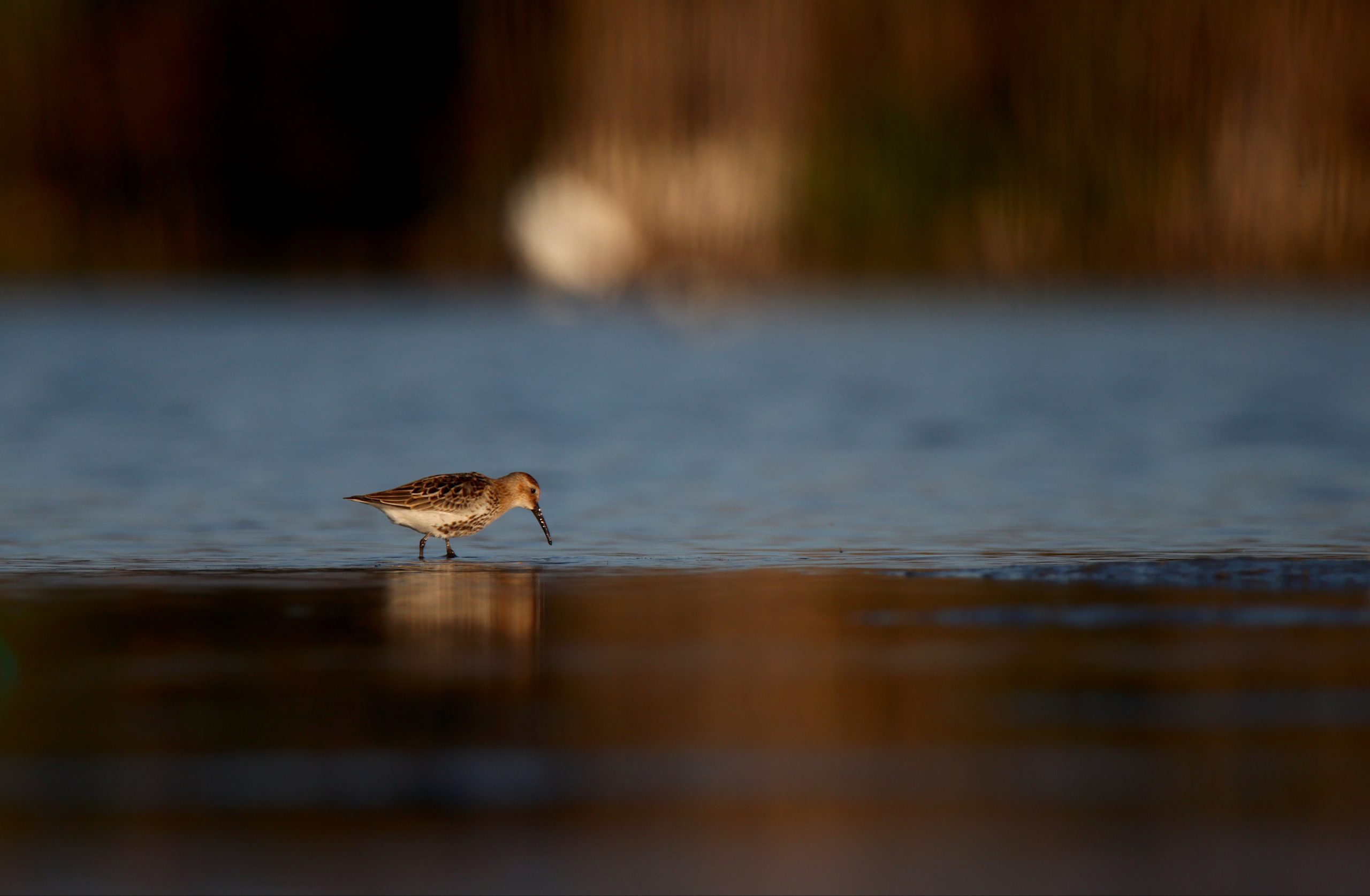Redeploying Adaptive EcoReefs By The EcoReef Project
EcoReefs As Adaptive Environmental Balancers
EcoReefs are designed to adapt to changing ecological conditions. Their modular structure allows adjustments in placement and density. This flexibility ensures balance between sediment stabilization and water flow. EcoReefs can be modified to support vegetation growth or animal refuge. Adaptation helps ecosystems reach natural equilibrium. Once plants and animals thrive independently, EcoReefs can be removed. Redeployment allows modules to serve new restoration projects. Most of the time, EcoReefs function effectively without modification. Their adaptability ensures resilience across diverse environments. EcoReefs embody temporary guardianship with long-term ecological impact.
| Feature | Adaptation | Outcome |
|---|---|---|
| Modular Design | Flexible placement | Balanced ecosystems |
| Density Control | Adjusted coverage | Optimized flow |
| Habitat Support | Plant and animal refuge | Thriving biodiversity |
| Removal | Safe extraction | Redeployment possible |
| Legacy | Temporary guardianship | Long-term resilience |
EcoReefs And Sediment Flow Adjustment
EcoReefs can be adapted to manage sediment transport. Their porous surfaces trap particles during high flow events. Adjusting module density changes sediment retention levels. This ensures balance between erosion control and deposition. EcoReefs support vegetation by stabilizing root zones. Once plants anchor soils, EcoReefs can be removed. Sediment cycles continue naturally without artificial input. Redeployment allows modules to stabilize new degraded areas. Most of the time, EcoReefs maintain sediment balance effectively. Their adaptability ensures geomorphological resilience. EcoReefs leave behind strengthened landscapes.
- Trap particles during high flow
- Adjust density for retention control
- Balance erosion and deposition
- Support vegetation root zones
- Allow removal after stabilization
- Continue natural sediment cycles
- Redeploy modules to new sites
- Maintain balance effectively
- Ensure geomorphological resilience
- Leave strengthened landscapes
EcoReefs And Nutrient Cycling Adaptation
EcoReefs can be adapted to regulate nutrient cycling. Their surfaces trap organic matter and support microbial growth. Adjustments in module placement enhance nutrient distribution. This prevents overloads that cause algal blooms. EcoReefs balance nutrient levels for plant and animal health. Once ecosystems stabilize, natural cycling resumes independently. EcoReefs can then be removed or relocated. Redeployment ensures modules serve new nutrient-stressed zones. Most of the time, EcoReefs regulate nutrients effectively. Their adaptability ensures long-term ecological balance. EcoReefs leave behind healthier waters.
| Nutrient Role | Adaptation | Legacy |
|---|---|---|
| Organic Capture | Porous surfaces | Supports microbes |
| Distribution Control | Placement adjustment | Balanced cycling |
| Bloom Prevention | Nutrient regulation | Cleaner waters |
| Removal | Safe extraction | Redeployment possible |
| Legacy | Natural cycling | Healthy ecosystems |
EcoReefs And Vegetation Growth Optimization
EcoReefs can be adapted to optimize vegetation growth. Their placement reduces current velocity near root zones. Adjusting module spacing enhances light penetration. EcoReefs trap sediment that nourishes plant beds. Adaptation ensures balance between protection and growth. Once vegetation matures, EcoReefs can be removed. Plants maintain resilience independently. Redeployment allows modules to support new fragile vegetation. Most of the time, EcoReefs foster plant growth effectively. Their adaptability ensures long-term vegetation stability. EcoReefs leave behind flourishing habitats.
- Reduce current velocity
- Adjust spacing for light access
- Trap sediment for nourishment
- Balance protection and growth
- Allow removal after maturity
- Enable independent resilience
- Redeploy modules to new zones
- Foster growth effectively
- Ensure vegetation stability
- Leave flourishing habitats
EcoReefs And Animal Refuge Adaptation
EcoReefs provide adaptable refuge for aquatic animals. Their cavities shelter fish, crabs, and mollusks. Adjusting module density increases refuge availability. EcoReefs balance protection with natural migration pathways. Once habitats regenerate, animals adapt independently. EcoReefs can then be removed safely. Redeployment ensures modules serve new degraded habitats. Most of the time, EcoReefs support animal resilience effectively. Their adaptability ensures biodiversity stability. EcoReefs leave behind thriving animal populations.
| Refuge Role | Adaptation | Outcome |
|---|---|---|
| Shelter Cavities | Density adjustment | Increased refuge |
| Migration Pathways | Balanced layout | Natural movement |
| Temporary Shelter | Short-term guardianship | Enables recovery |
| Removal | Safe extraction | Redeployment possible |
| Legacy | Natural habitats | Thriving populations |
EcoReefs And Flow Redistribution
EcoReefs can be adapted to redistribute water flow. Their structure channels currents away from erosion hotspots. Adjusting module orientation changes flow direction. This balances pressure across aquatic zones. EcoReefs prevent scouring and sediment loss. Once ecosystems stabilize, natural flow resumes independently. EcoReefs can be removed or relocated safely. Redeployment ensures modules serve new hydrological challenges. Most of the time, EcoReefs manage flow effectively. Their adaptability ensures hydrological resilience. EcoReefs leave behind balanced waterways.
- Channel currents safely
- Adjust orientation for flow control
- Balance pressure across zones
- Prevent scouring and loss
- Allow removal after stabilization
- Resume natural flow independently
- Redeploy modules to new sites
- Manage flow effectively
- Ensure hydrological resilience
- Leave balanced waterways
EcoReefs And Seasonal Adaptation
EcoReefs can be adapted seasonally to match ecological needs. Spring placement supports plant germination. Summer adaptation enhances filtration during algal bloom risk. Autumn deployment buffers sediment during storm runoff. Winter placement protects dormant root zones. Seasonal strategies optimize ecological impact. Once ecosystems stabilize, EcoReefs can be removed. Redeployment ensures modules serve new seasonal cycles elsewhere. Most of the time, EcoReefs function effectively year-round. Their adaptability ensures resilience across seasons. EcoReefs leave behind ecosystems balanced naturally.
| Season | Adaptation | Outcome |
|---|---|---|
| Spring | Plant support | Stronger vegetation |
| Summer | Algae control | Cleaner waters |
| Autumn | Sediment buffering | Reduced erosion |
| Winter | Root protection | Stable soils |
| Legacy | Seasonal adaptation | Year-round resilience |

EcoReefs And Microbial Balance
EcoReefs cultivate microbial biofilms that aid in water purification. Their surfaces support bacteria that break down pollutants. Adjusting module texture enhances microbial diversity. EcoReefs balance nutrient levels and reduce chemical stress. Once microbial ecosystems stabilize, EcoReefs are no longer required. Natural cycling continues independently. Eco Reefs can be removed or relocated safely. Redeployment ensures modules serve new polluted zones. Most of the time, EcoReefs regulate microbes effectively. Their adaptability ensures ecological balance. EcoReefs leave behind resilient microbial networks.
- Support pollutant breakdown
- Enhance microbial diversity
- Balance nutrient levels
- Reduce chemical stress
- Allow removal after stabilization
- Continue natural cycling independently
- Redeploy modules to new zones
- Regulate microbes effectively
- Ensure ecological balance
- Leave resilient networks
EcoReefs And Coral Integration
EcoReefs can be adapted to support coral nurseries. Their surfaces stabilize fragments and reduce sediment smothering. Adjusting module placement enhances light and flow for coral growth. EcoReefs balance protection with natural reef expansion. Once corals establish, EcoReefs are no longer required. Natural reef growth continues independently. EcoReefs can be removed or relocated safely. Redeployment ensures modules serve new restoration sites. Most of the time, EcoReefs accelerate coral recovery effectively. Their adaptability ensures reef resilience. EcoReefs leave behind thriving coral ecosystems.
| Coral Role | Adaptation | Legacy |
|---|---|---|
| Fragment Stabilization | Porous surfaces | Supports settlement |
| Flow Adjustment | Placement changes | Enhances growth |
| Temporary Scaffolding | Short-term guardianship | Enables recovery |
| Removal | Safe extraction | Redeployment possible |
| Legacy | Natural reef growth | Thriving ecosystems |
EcoReefs And Wetland Adaptation
EcoReefs reinforce wetland edges during recovery. Their porous surfaces trap sediment and buffer wave energy. Adjusting module density balances protection and flow. EcoReefs support marsh grasses and aquatic shrubs. Once wetlands stabilize, EcoReefs are no longer essential. Natural resilience persists independently. EcoReefs can be removed or relocated safely. Redeployment ensures modules serve new degraded wetlands. Most of the time, EcoReefs support wetlands effectively. Their adaptability ensures transitional ecosystem resilience. EcoReefs leave behind restored wetlands.
- Trap sediment for stability
- Buffer wave energy
- Adjust density for balance
- Support marsh vegetation
- Allow removal after stabilization
- Persist independently
- Redeploy modules to new wetlands
- Support effectively
- Ensure resilience
- Leave restored ecosystems
EcoReefs And Balanced Flood Mitigation
EcoReefs can be adapted to balance flood mitigation with ecological growth. Their interlinked modules dissipate surge energy while allowing natural flow. Adjusting density ensures protection without blocking migration pathways. EcoReefs buffer vegetation from uprooting during extreme events. Once plants and geomorphology stabilize, natural resilience resumes. EcoReefs can then be removed, changed or relocated safely. Redeployment ensures modules serve new flood-prone zones. Most of the time, EcoReefs balance flood control effectively. Their adaptability supports both ecology and safety. EcoReefs leave behind strengthened coastlines.
- Dissipate surge energy
- Allow natural flow
- Adjust density for balance
- Buffer vegetation from uprooting
- Resume resilience naturally
- Enable safe removal
- Redeploy to flood-prone zones
- Balance ecology and safety
- Function effectively most times
- Leave strengthened coastlines
EcoReefs And Adaptive Biodiversity Corridors
EcoReefs can be adapted to form biodiversity corridors. Their continuous layout connects fragmented habitats. Adjusting placement ensures balance between refuge and migration. EcoReefs support genetic exchange across aquatic populations. Once ecosystems stabilize, corridors persist naturally. EcoReefs can then be moved or relocated safely. Redeployment ensures modules serve new fragmented zones. Most of the time, EcoReefs maintain connectivity effectively. Their adaptability strengthens biodiversity resilience. EcoReefs leave behind thriving ecological networks.
| Corridor Role | Adaptation | Outcome |
|---|---|---|
| Habitat Links | Continuous layout | Safe migration |
| Placement Control | Adjusted spacing | Balanced refuge |
| Genetic Exchange | Species interaction | Population health |
| Removal | Safe extraction | Redeployment possible |
| Legacy | Natural corridors | Thriving networks |
EcoReefs And Water Chemistry Balance
EcoReefs can be adapted to regulate water chemistry. Their porous surfaces trap nutrients and contaminants. Adjusting filter media enhances pollutant removal. EcoReefs balance oxygen levels through microbial support. Once ecosystems stabilize, natural chemistry resumes independently. Redeployment ensures modules serve new polluted zones. Most of the time, EcoReefs regulate chemistry effectively. Their adaptability ensures aquatic health. EcoReefs leave behind balanced water systems.
- Trap nutrients and contaminants
- Enhance pollutant removal with media
- Balance oxygen levels
- Support microbial cycling
- Resume chemistry naturally
- Allow safe removal
- Redeploy to polluted zones
- Regulate effectively most times
- Ensure aquatic health
- Leave balanced systems
EcoReefs And Adaptive Urban Integration
EcoReefs can be adapted for urban waterfronts. Their modules filter stormwater and trap debris. Adjusting orientation balances flow with ecological needs. EcoReefs reduce pressure on drainage systems during floods. Once ecosystems stabilize, natural resilience persists. EcoReefs can be removed or relocated safely. Redeployment ensures modules serve new urban zones. Most of the time, EcoReefs integrate effectively with infrastructure. Their adaptability bridges ecology and engineering. EcoReefs leave behind cleaner, resilient waterfronts.
| Urban Role | Adaptation | Outcome |
|---|---|---|
| Stormwater Filtration | Porous surfaces | Cleaner discharge |
| Orientation Control | Flow balance | Ecological support |
| Flood Buffer | Surge absorption | Reduced pressure |
| Removal | Safe extraction | Redeployment possible |
| Legacy | Hybrid resilience | Cleaner waterfronts |
EcoReefs And Global Adaptability
EcoReefs can be adapted to diverse climates and hydrological conditions. Their modular design supports transport and redeployment. Adjusting density and media balances local ecological needs. EcoReefs function across rivers, estuaries, and coastlines. Once ecosystems stabilize, natural resilience persists independently. Redeployment ensures modules serve new international projects. Most of the time, EcoReefs adapt effectively worldwide. Their scalability strengthens global conservation. EcoReefs leave behind resilience across regions.
- Adapt to diverse climates
- Support transport and redeployment
- Balance local ecological needs
- Function across varied habitats
- Resume resilience naturally
- Allow safe removal
- Redeploy internationally
- Adapt effectively worldwide
- Strengthen global conservation
- Leave resilience across regions
EcoReefs And Dynamic Sediment Balancing
EcoReefs can be adapted to balance sediment retention and release. Their porous surfaces trap particles during high flow events. Adjusting module spacing allows controlled deposition. This ensures erosion is reduced while natural sediment cycles continue. EcoReefs support vegetation by stabilizing root zones. Once plants anchor soils, natural geomorphology resumes. Redeployment ensures modules serve new degraded areas. Most of the time, EcoReefs maintain sediment balance effectively. Their adaptability strengthens long-term landscape resilience.

EcoReefs And Nutrient Flow Regulation
EcoReefs regulate nutrient flows to prevent ecological imbalance. Their surfaces trap excess nitrogen and phosphorus. Adjustments in filter media enhance pollutant removal. EcoReefs balance nutrient levels for plant and animal health. Once ecosystems stabilize, natural cycling resumes independently. EcoReefs can be removed without loss of function. Redeployment ensures modules serve new nutrient-stressed zones. Most of the time, EcoReefs regulate nutrients effectively. Their adaptability ensures aquatic resilience. EcoReefs leave behind healthier waters.
EcoReefs And Vegetation Growth Balance
EcoReefs optimize vegetation growth by balancing protection and exposure. Their placement reduces current velocity near root zones. Adjusting module density enhances light penetration. EcoReefs trap sediment that nourishes plant beds. Once vegetation matures, EcoReefs are no longer required. Plants maintain resilience independently. EcoReefs can be removed or relocated safely. Redeployment ensures modules support new fragile vegetation. Most of the time, EcoReefs foster plant growth effectively. Their adaptability ensures long-term vegetation stability. EcoReefs leave behind flourishing habitats.
EcoReefs And Animal Refuge Flexibility
EcoReefs provide adaptable refuge for aquatic animals. Their cavities shelter fish, crabs, and mollusks. Adjusting module density increases refuge availability. EcoReefs balance protection with natural migration pathways. Once habitats regenerate, animals adapt independently. EcoReefs can then be removed safely. Redeployment ensures modules serve new degraded habitats. Most of the time, EcoReefs support animal resilience effectively. Their adaptability ensures biodiversity stability. EcoReefs leave behind thriving animal populations.
EcoReefs And Flow Control Adaptation
EcoReefs can be adapted to redistribute water flow. Their structure channels currents away from erosion hotspots. Adjusting module orientation changes flow direction. This balances pressure across aquatic zones. EcoReefs prevent scouring and sediment loss. Once ecosystems stabilize, natural flow resumes independently. EcoReefs can be removed or relocated safely. Redeployment ensures modules serve new hydrological challenges. Most of the time, EcoReefs manage flow effectively. Their adaptability ensures hydrological resilience. EcoReefs leave behind balanced waterways.
EcoReefs And Seasonal Deployment Balance
EcoReefs can be adapted seasonally to match ecological needs. Spring placement supports plant germination. Summer adaptation enhances filtration during algal bloom risk. Autumn deployment buffers sediment during storm runoff. Winter placement protects dormant root zones. Seasonal strategies optimize ecological impact. Once ecosystems stabilize, EcoReefs can be removed. Redeployment ensures modules serve new seasonal cycles elsewhere. Most of the time, EcoReefs function effectively year-round. Their adaptability ensures resilience across seasons. EcoReefs leave behind ecosystems balanced naturally.
EcoReefs And Microbial Ecosystem Balance
EcoReefs cultivate microbial biofilms that aid in water purification. Their surfaces support bacteria that break down pollutants. Adjusting module texture enhances microbial diversity. EcoReefs balance nutrient levels and reduce chemical stress. Once microbial ecosystems stabilize, EcoReefs are no longer required. Natural cycling continues independently. EcoReefs can be removed or relocated safely. Redeployment ensures modules serve new polluted zones. Most of the time, EcoReefs regulate microbes effectively. Their adaptability ensures ecological balance. EcoReefs leave behind resilient microbial networks.
EcoReefs And Coral Growth Balance
EcoReefs can be adapted to support coral nurseries. Their surfaces stabilize fragments and reduce sediment smothering. Adjusting module placement enhances light and flow for coral growth. EcoReefs balance protection with natural reef expansion. Once corals establish, EcoReefs are no longer required. Natural reef growth continues independently. EcoReefs can be removed or relocated safely. Redeployment ensures modules serve new restoration sites. Most of the time, EcoReefs accelerate coral recovery effectively. Their adaptability ensures reef resilience. EcoReefs leave behind thriving coral ecosystems.
EcoReefs And Wetland Edge Balance
EcoReefs reinforce wetland edges during recovery. Their porous surfaces trap sediment and buffer wave energy. Adjusting module density balances protection and flow. EcoReefs support marsh grasses and aquatic shrubs. Once wetlands stabilize, EcoReefs are no longer essential. Natural resilience persists independently. EcoReefs can be removed or relocated safely. Redeployment ensures modules serve new degraded wetlands. Most of the time, EcoReefs support wetlands effectively. Their adaptability ensures transitional ecosystem resilience. EcoReefs leave behind restored wetlands.
EcoReefs And Global Redeployment Balance
EcoReefs can be adapted to diverse climates and hydrological conditions. Their modular design supports transport and redeployment. Adjusting density and media balances local ecological needs. EcoReefs function across rivers, estuaries, and coastlines. Once ecosystems stabilize, natural resilience persists independently. EcoReefs can then be fully adapted for all needs and or removed or relocated safely. Redeployment ensures modules serve new international projects. Most of the time, EcoReefs adapt effectively worldwide. Their scalability strengthens global conservation. EcoReefs leave behind resilience across regions.













Leave a Reply